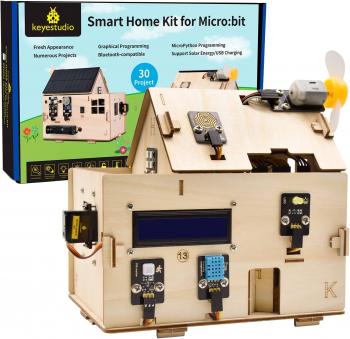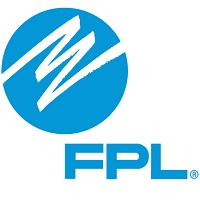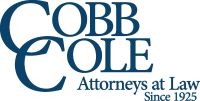From Micro:bits to Smart Homes: Empowering Students with the Magic of Coding

- School:
- Pine Ridge High School
- Subject:
- Technology
- Teacher:
- Christina Fernandez
- Students Impacted:
- 50
- Grade:
- 9-12
- Date:
- September 12, 2023
Investor
Thank you to the following investor for funding this grant.
Duke Energy - $999.80
Original Grant Overview
Goal
Coding is like learning a new language, and just like learning a language, applying it in practical, real-world scenarios enhances comprehension. This project serves as a valuable opportunity for students to not only delve into the intricacies of coding but also to harness the advantages of applying these coding skills to a tangible, real-life project.
In simpler terms, coding, which involves writing instructions for computers to follow, can be compared to teaching a computer how to think and act. Python, in this context, is the coding language used to trin the Micro:bit to perform a task. By engaging in this project, students will gain hands-on experience in using Python to control and automate various aspects of a smart home, illuminating the practical applications of coding in our daily lives.
What will be done with my students
STANDARDS:
AP Computer Science Principles (AP CollegeBoard) Big Idea 3: Algorithms and Programming.
1.A Investigate the situation, context, or task.
1.B Determine and design an appropriate method or approach to achieve the purpose.
1.D Evaluate solution options.
2.B Implement and apply an algorithm.
3.A Generalize data sources through variables.
3.B Use abstraction to manage complexity in a program.
3.C Explain how abstraction manages complexity.
4.A Explain how a code segment or program functions.
4.B Determine the result of code segments.
4.C Identify and correct errors in algorithms and programs, including error discovery through testing.
Applications of Artificial Intelligence:
20.0 Design and evaluate a perception system and its limits.
21.0 Train and evaluate a range of ML models based on specific accuracy, inclusivity, and ethical design criteria.
22.0 Design and evaluate a data set to solve a problem using specific accuracy, inclusivity, ethical design criteria.
23.0 Design AI solutions using embedded computing.
26.0 Use appropriate tools to design an AI System to solve problems.
29.0 Set up and use a ML pipeline to solve a problem.
30.0 Appropriately use automated AI services to accomplish common tasks.
31.0 Explain and use design thinking to solve a problem.
32.0 Show how a system is composed and interacts and be able to express verbally, graphically and in writing how the system functions.
Students will use the “Smart Home Kit” along with Micro:bit V2 programable boards to demonstrate real world application of algorithms which they will code using Python as their programing language. Students will build their mini houses with parts included in their kits, they will install the sensors, motors, actuators, etc and they will program their Micro:bit boards connected to a computer, where they will use Python as their coding language. This will allow them to make connections with real world applications, explore potential uses for their skills, and understand relationships between the data and output. This means that their smart houses will be able to respond to sensors (data) such as temperature & humidity, motion, steam, as well as activate fans, lights and sound alarms (output).
Benefits to my students
This funding is essential to obtaining these Smart House kits using Micro:bit development boards. Artificial Intelligence is a new course, and doesn’t have any funds available to purchase these kits, and AP Computer Science is only in its third year, and also has a very limited budget. These kits will provide students with the necessary equipment to create a tangible miniature smart house where they can physically implement the tasks assigned to their code by use of the sensors and actuators. This will grant them with a hands-on experience to use their programing skills in a tangible way, similar to what they are using in their real life, so they can better understand the relationships between the different elements of their code and the end result. An additional benefit would be that students would be able to explore hardware (the sensors, actuators, computer boards, wires, motors, etc.) use in addition to programing as a possible career choice.
Budget Narrative
For this project I will purchase one (1) BBC Micro:bit v2 club pack with 10 boards ($210), Twelve (12) KEYESTUO Micro:bit Smart Home Starter Kits ($58.75 each), one (1) KEYSTUDIO 45 Sensor Kits ($56), one (1) ELECFREAKS accessories starter kit ($32.80). Subtotal is $1,005 at Amazon.com.
Items
| # | Item | Cost |
|---|---|---|
| 1 | one (1) BBC Micro:bit v2 club pack with 10 boards | $210.00 |
| 2 | Twelve (12) KEYESTUO Micro:bit Smart Home Starter Kits ($58.75 each) | $701.00 |
| 3 | one (1) KEYSTUDIO 45 Sensor Kits | $56.00 |
| 4 | one (1) ELECFREAKS accessories starter kit | $32.80 |
| Total: | $999.80 |















Share
Please share this page to help in fulfilling this grant.
Email to a Friend